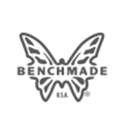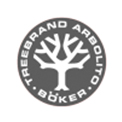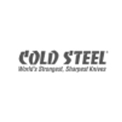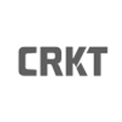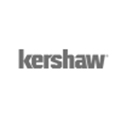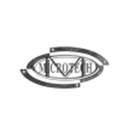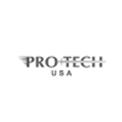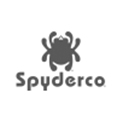How to Choose a Kershaw Pocket Knife for EDC That You Will Love
29th Dec 2020
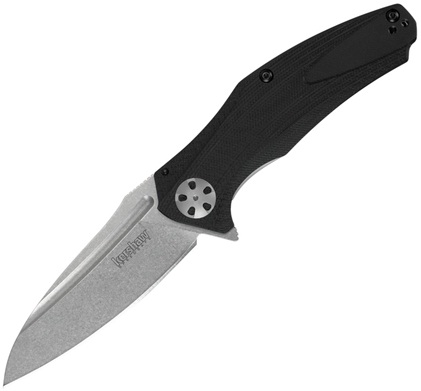
The only thing that is standing between you and an EDC Kershaw Pocket Knife that will be your constant companion is a few moments of thought and consideration before you make the purchase. Consider the following points that we’re going to lay out for you and you’ll end up adding a Kershaw knife to your pocket that you’ll want to have on your every day, sharpening the blade up to the spine over time.
Here’s how you can pick out a Kershaw pocket knife that you’ll get so attached to that you’ll feel naked when you accidentally leave home without it.
1.Blade Steel
The first thing on the list, although it might not be the most important thing, is the blade steel. While other features like the opening mechanism and blade size might affect you more pointedly (no pun intended) the blade steel will have the number one impact on how well a blade will perform, all things being equal.
Broadly speaking, there are stainless steels and high carbon steels, although some stainless steels call themselves high carbon steels, like Buck’s 420HC. (420HC has .45 carbon, making it somewhat equivalent in its ability to take a heat treatment to 1045 steel, although it is better at resisting corrosion because it has a higher level of chromium and other additives.)
Therefore, as you can see, ‘stainless’ and ‘high carbon’ designations don’t really mean anything. It’s better to become familiar with a few different types of steels that Kershaw knives are made with.
For example, Kershaw’s Blur is occasionally made with S30V, which has been marketed as a super steel because it is extremely hard, giving it excellent edge retention. It is also corrosion resistant, but due to its hardness it is not particularly tough. In fact, if anything, it is brittle. It’s worth noting, however, that you can also find the Blur in other tougher, more corrosion resistant (although softer) steels, like Sandvik 14C28N.
That’s just one example, but to make the most of it, they say you can have two of the three following traits - some combination of toughness, edge retention (hardness) and corrosion resistance. Today, thanks to advances in steel production and particle metallurgy, there are some very good steels that offer a fair balance across all three.
For example, Kershaw is very fond of using Cr-MoV steels that are very popular today, such as the 8Cr13MoV that can be found among some of its blades. While this is still categorically a ‘budget’ steel, this alloy is very popular because it is relatively tough, corrosion resistant, and can take a decent heat treatment.
Will the edge last for weeks with hard use? Can you leave it in a tank of saltwater? Can you baton it through a knotty elm round with an engineer’s hammer? The answer to all three of these questions is a hard “no.” However, what you can do with a blade made of 8Cr13MoV is keep it clean by wiping it down, keep the edge razor sharp with periodic touch ups, and use it to perform a number of prying and batoning tasks - as long as you are reasonable.
In other words, if you want to find the blade steel that works best for you, create a qualitative self-assessment of what you need most - toughness, corrosion resistance or edge retention, and go from there. There’s a Kershaw pocket knife that will satisfy your demands.
2.Grind
Something else that’s very important is the blade grind, although this will largely become a matter of personal preference much like everything else on this list. For the purposes of this article, we’re just going to look at three grind styles, since the majority of folding knives today (including most if not all Kershaw pocket knives) use one of the following of these three grinds.
●Flat - A full flat grind starts at the spine and goes all the way down to the edge. Most kitchen knives have full flat grinds. ESEE, Ontario Knife Company and Spyderco are also known for giving their blades flat grinds. A flat grind is easy to reprofile and resharpen, and excellent for fine carving as it is thin by the edge while still keeping a fair amount of steel behind the bevel for integrity.
●Scandinavian (AKA Scandi or “half flat”) - Mora is well known for its Scandi ground blades, and being from Sweden, is typical of blades produced in the region. Helle and Martiini also make blades with Scandi grinds, and all of these are from Scandinavia. A Scandi or “half flat” grind starts about halfway down the side of the blade and proceeds to the bevel. This type of grind is favored by those who are hard on their knives because it keeps a lot of steel behind the edge.
●Hollow - Hollow grinds are popular today, although in the past they were the purview mostly of fine tools like straight razors. Hollow grinds are the best for very fine carving, processing meat, and it is easy to touch up the edge; the trade off is that hollow ground edges can be very fragile under abuse.
3.Straight Edge vs. Partial Serration
Something else to keep in mind while you shop is whether or not you want a straight edge or an edge with a partial serration. Keep in mind that there are some things that a straight edge is better for and others that a serration is better for.
Straight edges are better for very fine detail work, for carving and shaping wood, for breaking down boxes, and processing meat. They are also easier to maintain. However, at the same time, serrated edges are better at cutting across the grain of wood, through bone, through gummy, synthetic materials like dense plastics and polymers, and through thick fibers and ropes.
Remember this, though - all things being equal, it is much easier to resharpen a straight edge. If you have a partial serration, which you can have in a Kershaw pocket knife, you’ll want a rounded or a rod sharpener in order to keep the serrations biting. These will wear out over time.
4.Blade Profile
In addition to blade steel, blade profile is also a truly critical consideration. It is one of the most important of them all and will affect what you are and are not able to reasonably achieve with a knife for EDC. For the purposes of this article, we are only going to focus on a few different blade profiles that Kershaw offers, because of the value they add. We will not be addressing clip point blades, spear point blades, tanto points or others; just those detailed below. We recognize that a folding knife may have many other profiles, it’s just that these are common among Kershaw’s designs.
●Drop Point - Arguably the most versatile blade profile and one of the strongest, the basic drop point profile is excellent for piercing, slicing, batoning, carving and much more.
●Needle Point - Needle points are very fragile at the tip, but they excel where a piercing function is the most desirable trait of a knife.

●Sheepsfoot/Modified Sheepsfoot - When it comes to point integrity, sheepsfoot blades are the strongest out there. They are excellent for carving and cutting across the grain of wood.
●Straight Back - Straight back knives and trailing points create a large belly that is ideally suited for wide, long sweeping cuts. These are good for skinning and slicing.
●Recurve - Recurve blades can be hard to sharpen, but they also keep a little bit of belly in the center of the blade where material can be wedged and “unzipped.”
5.Blade Size
Blade size is a matter of contention among practitioners of EDC. Whereas a large knife is impressive and also more capable of camp chores and hard work than a smaller folder like a Kershaw Leek, it is also unwieldy. Additionally, the larger a knife becomes, the less suitable it becomes as a folding knife with a locking mechanism.
In a lot of ways, smaller is better. A blade that sits between two and a half to four inches (at the most) is probably all you need for most EDC situations. There are plenty of “micro” knives out there with smaller blades, and certainly some much bigger folders, but a smaller knife is more convenient, carries more easily, and is less ungainly in the hand for the fine tasks required of most EDC scenarios, like the dreaded envelope or Amazon package.
6.Handle Material
Stag antler, bone and beautiful wooden scales, like ebony and rosewood, make a fine show in some presentation and hunting knives, but they require a lot of care and maintenance (a lot!) and without proper care they will split, crack, break or even become discolored. In addition, materials like bone and wood, which are absorbent, will not take kindly to sweat or water, which will not only discolor them but shorten their useful lifespan.
For the purposes of EDC - unless looks matter to you more than function - choose a bombproof synthetic over natural, pretty materials like wood or bone inlays. They’re attractive, but temperamental, absorbent, and finicky. Meanwhile, you could have simply chosen a pocket knife with aluminum scales or synthetics like G10, Micarta or carbon fiber. They are light, strong, and require no maintenance whatsoever.
7.Opening Mechanism
In the world of pocket knives, you have a few options for deployment, and in the world of Kershaw knives, you’re going to have basically three options.
●Thumb stubs (ambidextrous is best!) - These protrude from the spine of the blade near the shoulder. By applying pressure at the right angle, you can “flick” the blade open.
●Flipper - Flippers stick out the back of the knife near the shoulder when closed and become a finger guard once opened. By applying pressure to the flipper with the index finger, the knife can be opened, either manually or by a mechanism.
●Assisted opening (like Kershaw’s Speed Safe) - Assisted opening knives may make use of either a thumb stud as mentioned above or a flipper, before a torsion spring in the assembly continues and completes the opening of the blade. Some prefer automatic knives, but one thing you can and should note is the following. With a little practice, you can open a folding knife as fast - or faster - with a thumb stud and a manual action rather than with an assist.
It’s important to note that other pocket knives may use holes or nail nicks to assist with the opening of the blade, but these are either uncommon or nonexistent in Kershaw knives. You can also choose between manual action or automatic knives; Kershaw has both.
8.Locking Mechanism
One more thing to make sure is that you choose a good locking mechanism. Some locks, like lock backs and Axis locks, are stronger than the two noted herein, but most Kershaw knives will give you one of two options.
●Liner lock - When the knife is opened, a strip of the liner will extend within the knife to wedge the blade into the open position.
●Frame lock - Frame locks are identical in function to liner locks, with the exception that the lock itself is a part of the frame of the knife and not of the liner (or that a liner is absent entirely).
Both of these locking mechanisms have basically the same strengths and weaknesses. You choose which works best for you, or try out a few and see what is most comfortable and intuitive.
9.How Do You Want to Carry It?
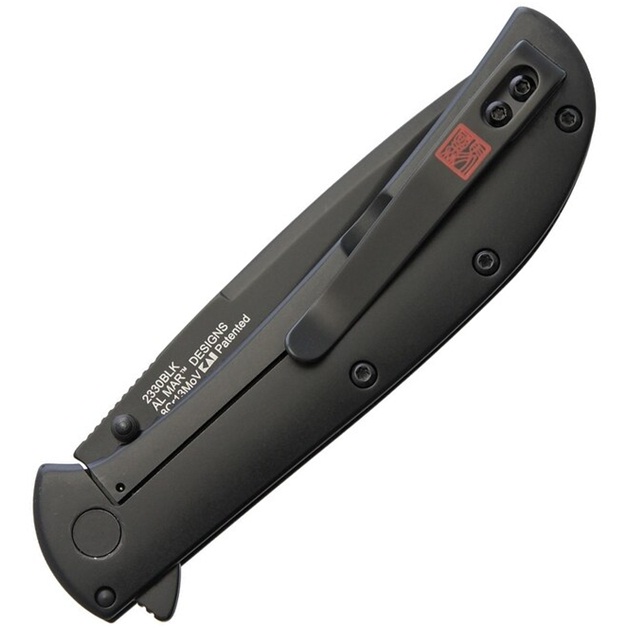
Whereas in the past many folding knives were carried on designated belt sheaths or free floating in a pocket, today, many folders can be carried via the aid of a pocket clip. You can still carry them free in your pocket, or you can carry them at the top of the pocket via the clip. Also, some pocket knives give you the ability to switch the clip, so that you can carry either tip up or down, whichever is your preference.
Made by KAI USA, an everyday carry Kershaw pocket knife is soon to be the first thing you reach for in the morning and the last thing you unload out of your pocket at knife, and this guide is an excellent jumping off point. Experience is the best teacher, but if you don’t know where to start, use these pointers and call us for help if you’d like some more input from us.
Don’t be shy about reaching out to us for help if you’re not sure what to look for. We’d be happy to pick out your next favorite EDC Kershaw - so get in touch with us at WhiteMountainKnives@gmail.com if you want to learn more.

